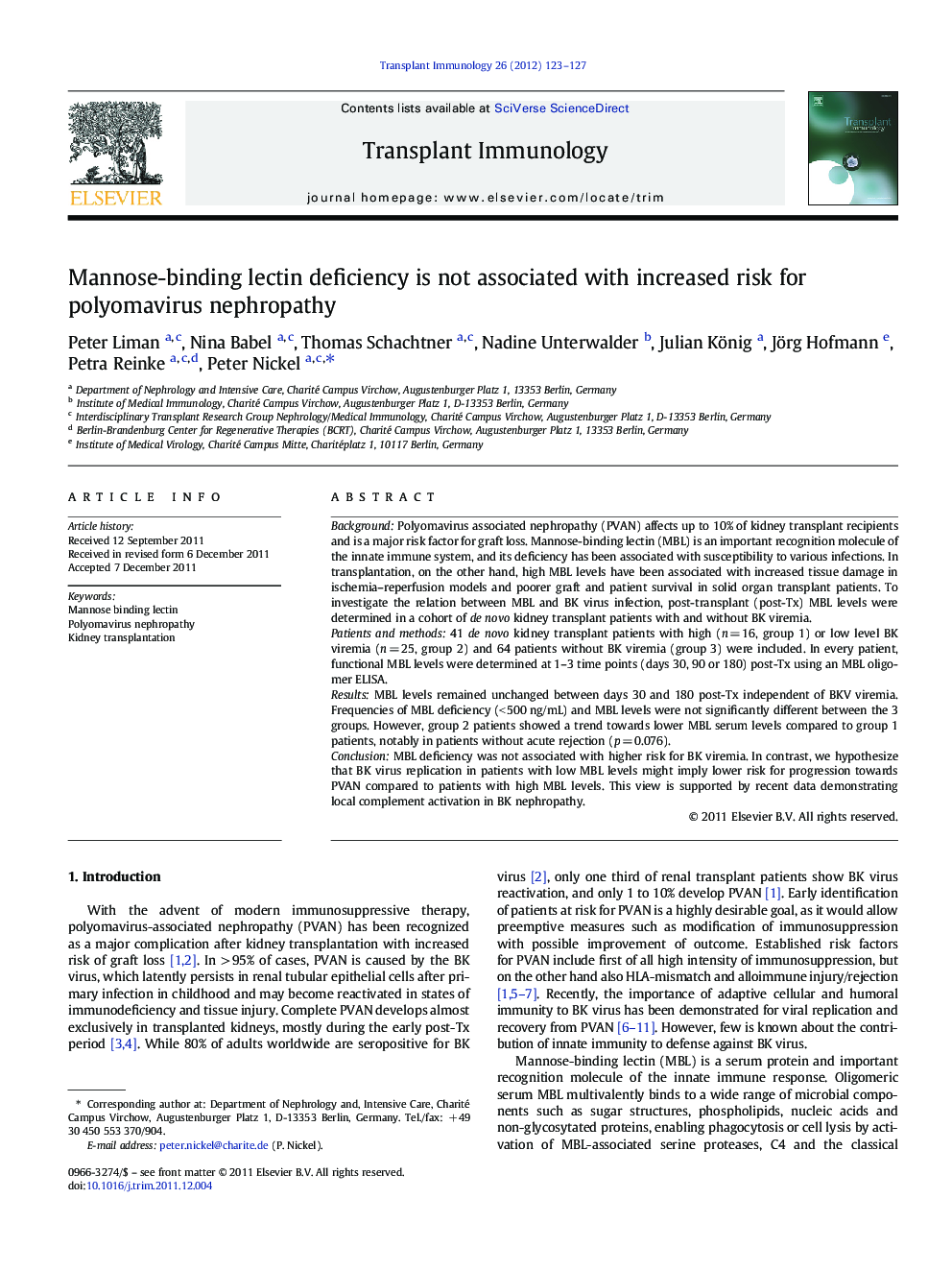| Article ID | Journal | Published Year | Pages | File Type |
|---|---|---|---|---|
| 3392174 | Transplant Immunology | 2012 | 5 Pages |
BackgroundPolyomavirus associated nephropathy (PVAN) affects up to 10% of kidney transplant recipients and is a major risk factor for graft loss. Mannose-binding lectin (MBL) is an important recognition molecule of the innate immune system, and its deficiency has been associated with susceptibility to various infections. In transplantation, on the other hand, high MBL levels have been associated with increased tissue damage in ischemia–reperfusion models and poorer graft and patient survival in solid organ transplant patients. To investigate the relation between MBL and BK virus infection, post-transplant (post-Tx) MBL levels were determined in a cohort of de novo kidney transplant patients with and without BK viremia.Patients and methods41 de novo kidney transplant patients with high (n = 16, group 1) or low level BK viremia (n = 25, group 2) and 64 patients without BK viremia (group 3) were included. In every patient, functional MBL levels were determined at 1–3 time points (days 30, 90 or 180) post-Tx using an MBL oligomer ELISA.ResultsMBL levels remained unchanged between days 30 and 180 post-Tx independent of BKV viremia. Frequencies of MBL deficiency (< 500 ng/mL) and MBL levels were not significantly different between the 3 groups. However, group 2 patients showed a trend towards lower MBL serum levels compared to group 1 patients, notably in patients without acute rejection (p = 0.076).ConclusionMBL deficiency was not associated with higher risk for BK viremia. In contrast, we hypothesize that BK virus replication in patients with low MBL levels might imply lower risk for progression towards PVAN compared to patients with high MBL levels. This view is supported by recent data demonstrating local complement activation in BK nephropathy.
Graphical abstractA. Serum MBL values in n = 105 de novo kidney transplant patients during the early post-transplant period. Patients with low BK viremia show a trend towards lower MBL levels compared to the other groups. B. To exclude confounding bias by acute rejection, patients with acute rejection are excluded. The trend towards lower MBL levels in low level BK viremia is almost statistically significant compared to high level BK viremia. As recent studies showed local complement activation in BK nephropathy, patients with low MBL levels who develop BK viremia might be at lower risk towards progression to polyomavirus nephropathy. Bold lines indicate the respective median values.Figure optionsDownload full-size imageDownload as PowerPoint slideHighlights► MBL levels remain stable after transplantation independent of BK viremia. ► MBL deficiency was not associated with increased risk for BK viremia. ► In BK viremic patients, low MBL levels were associated with low level viremia. ► Complement activation in BK virus nephropathy has previously been demonstrated. ► In conclusion, low MBL levels might predict lower risk for BK nephropathy.
